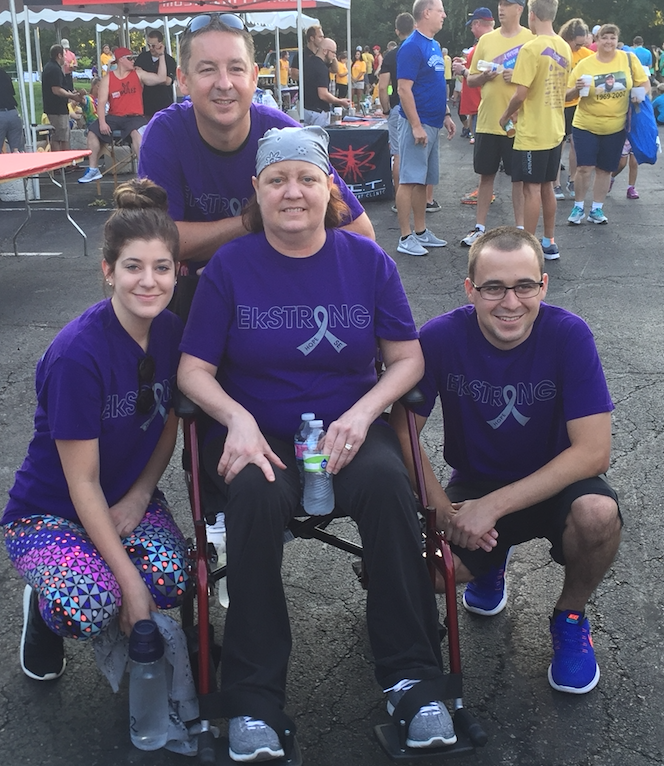Written by: Courtney Benisch – Regional Relationship Coordinator for Head for the Cure

Hearing the diagnosis of brain cancer affects not only the patient immensely, but the family and friends as well. In 2019, 80,000 people will be diagnosed with brain cancer, which means at least 80,000 people will become a caregiver as well. In most cases, the primary caregiver is a spouse, partner, parent, or an adult child. When family is not around, close friends, co-workers, or neighbors may fill this role. The caregiver has a key role in the patient’s care. Good and reliable caregiver support is crucial to the physical and emotional well-being of those living with a brain cancer diagnosis.
Many treatments today are being shifted to the outpatient setting, where the patient does not need to be admitted to the hospital to receive treatment. This means someone is needed to be part of the day-to-day care of the patient. As a result, caregivers have many roles which continuously change as the patient’s needs change during and after cancer treatment.
Two months before my 23rd birthday, I became a caregiver. In March of 2016 my mom was diagnosed with a Glioblastoma. She fought this disease hard and there was never a day she didn’t have a smile on her face. Just nine months later, my mom’s battle ended, but my role of being a caregiver did not stop.
As a caregiver who was younger than most, I went from being a 20-something working three jobs and living with friends to moving back in with my parents, working one job, and becoming a caregiver within a matter of 24 hours. For me, my step-dad, and my brother we knew instantly that this is what we had to do.
There are things as a caregiver you never expect to do and that is by far the hardest part. My mom had severe balance issues due to the location of her tumor, so we always had to help her walk, just like when she helped me learn how to walk. We had to reteach her how to brush her teeth using tips from occupational therapy. When a chemotherapy treatment gave her blood clots, I had to learn how to give her blood thinner injections. Most of all, due to her tumor placement, her memory and cognition were severely affected. We had to learn patience beyond anything I’ve ever managed before. As any caregiver knows, it is hard watching your loved one be consumed by this horrible disease, but know they appreciate everything you do for them.
At my events with Head for the Cure as a Regional Relationship Coordinator I always talk about how as a caregiver, we’re in a club we never chose to be in, but we wouldn’t change it for the world. Caregiving doesn’t have a stop date. I believe once you are one, you never get rid of the title because you dedicated a portion of your life to your loved one when it mattered the most. Processing that takes time and that is part of the healing journey. Everyone handles being a caregiver in different ways. But one of the most important things I learned is to take care of yourself as well.
This is the first piece in the “Staying Strong as a Caregiver” series written by Courtney Benisch
Courtney is a graduate of Missouri State University with a Bachelor’s Degree in Public Relations. She began working for the Head for the Cure Foundation in August 2018 and manages their Midland, Central Texas, North Texas, San Antonio, Houston, and Phoenix 5K events.
